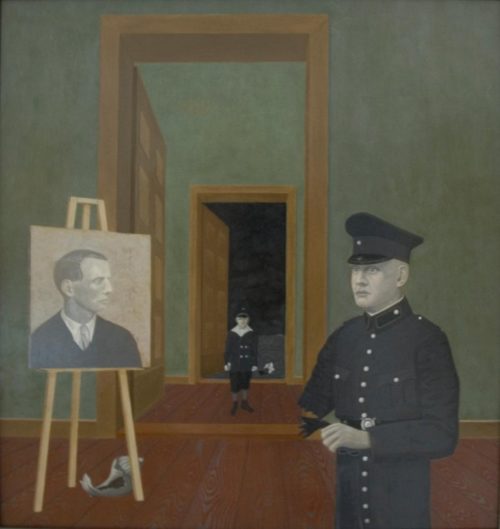
Heinz Otto Laub
“The word ‘freedom’ resonates so widely within the common-sense understanding of Americans that it becomes ‘a button that elites can press to open the door to the masses’ to justify almost anything. Thus could Bush retrospectively justify the Iraq war. Gramsci therefore concluded that political questions become ‘insoluble’ when ‘disguised as cultural ones’.”
David Harvey (A Brief History of Neoliberalism)
“The centralization of power, even more marked than the concentration of capital, reinforces the interpenetration of economic and political power. The “traditional” ideology of capitalism placed the emphasis on the virtues of property in general, particularly small property—in reality medium or medium-large property—considered to purvey technological and social progress through its stability. In opposition to that, the new ideology heaps praise on the “winners” and despises the “losers” without any other consideration. The “winner” here is almost always right, even when the means used are borderline illegal, if they are not patently so, and in any case they ignore commonly accepted moral values.”
Samir Amin (The New Imperialist Structure, MR 2019)
“Thus, what emerges on close examination of hundreds of women’s movies is how strange and ambivalent they really are.”
Janine Basinger ( A Woman’s View: How Hollywood Spoke to Women, 1930–1960)
“I am quite certain that the madness of fascism once it has taken hold of the earth… [will leave little to] be salvaged of those things on which a meaningful existence for us once depended. I do not like to use such grand words, but what is going on here is not simply a world at war anymore, but rather the collapse of [a] form of culture . . .”
Theodor Adorno (Letter to Brecht)
What has struck me recently, again and again, is the way culture — western culture — has become a sort of psychic punching bag for both the ruling class and — really, everyone else. Cultural production is treated with contempt. Often just passive/aggressively. Hollywood is in many ways now the defining engine for this contempt. Samir Amin wrote “This ruling class’ current behavior is quite close to that of the mafia…”
And this is of course quite literally true. One reason Trump is so useful to the system is that embodies its own logic in a condensed form, and he has stopped any pretense to liberal humanist values. What he does is not much different than any other recent president, except that he flaunts what was once shrouded in claims of bourgeois respectability. But that bourgeoisie is gone. The family centered traditional burghers of capital are gone. Where once those burghers suggested stability and lineage, today the finance capital overlords are unstable and without lineage.
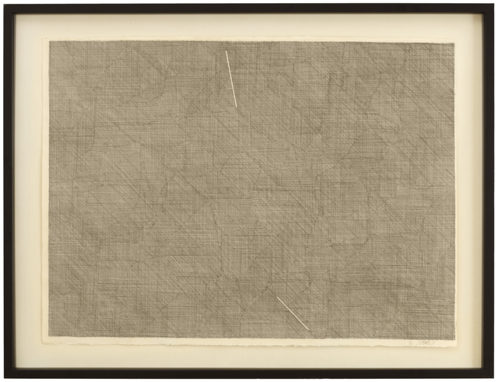
Ferdinand Penker
Trump learned how to navigate the world of inherited wealth from Roy Cohen, himself the son of supreme court justice. Frank Rich’s excellent short profile on Trump and Cohen in the Studio 54 days is essential reading (here http://nymag.com/intelligencer/2018/04/frank-rich-roy-cohn-the-original-donald-trump.html ).
It is hardly an accident, I don’t think that movies about the mafia have had such popularity and durability. The American public, American culture, is infused with this sense of truth, somehow, in how American organized crime came to exert such power, and they associate, rightly in many ways, that power with the very wealthy. The mafia narrative fit a subterranean hidden history of themselves. The Mafia narrative (and there are a dozen films…and really many more than that…besides the Godfather trilogy that serve to validate this, but none quite as perfectly as Coppola’s three films) is almost a sort of foundation myth now for American consciousness. It is the story silently recited during the watching of both other fictional film stories or even watching News reports. That is the benchmark ur-story and it has replaced whatever other earlier fantasy narratives propped up the white supremacist beliefs of Puritan America. In one sense what Walt Disney offered in the 1950s was gradually eclipsed by Reagan era cynicism. And as a side bar note here, I am now convinced that the single most indelible quality of the Reagan era mythology is cynicism. This runs counter to conventional portraits of Reagan, but I think I am right. Reagan was well into the early stages of Alzheimers by the time he became President — for the FIRST term. But such was the cynical nature of society by then, this was only met with winks and knowing nods. It was OK, too. And it was OK because the Mafia storyline was already sedimented into the cultural terrain. The first Godfather film was released in 1972. Reagan of course took office as the 40th president in 1981. The second Godfather film, part 2, came out in 1974, and the final part of the trilogy in 1990.
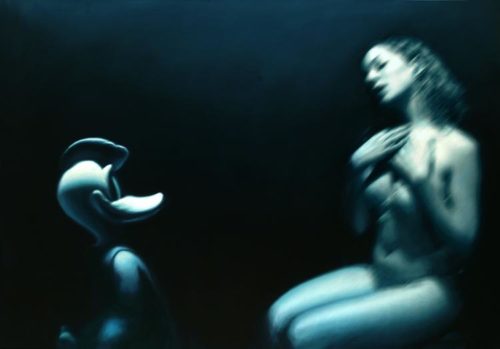
Gottfried Helnwein
These films are melodramas, all of them. The Mafia myth is one told in melodrama. And it may be that all the Operatic Italian exaggeration serves a very specific fascist aesthetic. And it is impossible to not mention again the fascist orator and the prominence of this motif in post war Italian cinema. Or to mention Bertolucci and then, too, Italian neo-realism. The entire palette of The Godfather is one of rich textiles, heavy carpets and the muted footsteps on those carpets, closed drapes and whispers — and Nino Rota’s highly effective if kitsch score. The music is mournful and evokes something lost, something missed. Roger Ebert — who was a surprisingly good critic, wrote..(in a 2008 review of part two) ” Nostalgic, mournful, evoking lost eras, it stirs emotions we shouldn’t really feel for this story, and wouldn’t, if the score were more conventional for a crime movie. Why should we regret the passing of a regime built on murder, extortion, bribery, theft and the ruthless will of frightened men? Observe how powerfully Nino Rota’s music sways our feelings for the brutal events onscreen.”
I remember these films were consistently named favorite or best film by first year students at the Polish Film School when I asked. It was shorthand for quality and gravitas. These codes came to represent “art”. Ebert is right, too. Disproportionate emotional expression attached to a skeletal frame.
But before that, and returning to this transition from Disney to Reagan and Mario Puzo, from belief in foundation myths to belief in cynical anti-myths. And the gradual rise of the figure of the authoritarian leader (in America)….it is six years after Godfather 2 that Reagan wins in a landslide. Perhaps the Reagan story is only possible as melodrama, while Clinton was crime fiction, pulp fiction, and Bush wanted his story written by Louis l’Amour but got Martin Amis or Brett Easton Ellis (American Psychopath was published in 1991, two years after Reagan left office). And Obama was Le Carre, and Trump is tabloid filler, or really, it is also just a self-help book. A novel written in Twitter. None of that quite holds up but what seems meaningful IS the transitions culturally. The 70s saw the dying light of Nixon, followed by Gerald Ford (it’s funny how I forget Nelson Rockefeller was Ford’s VP) and then Carter. There was the birth of ridicule under Ford. Culture became not only ironic but snarky. By the time of Carter the system was manufacturing its own post modern effect. Carter’s story was never meant to be convincing. Or it was.
There are facile gauges for these transitions — the paintings each president chose for the White House. I mean its painful and none of these picks were likely made the morons who took office, but even if its only the consultancy, its vaguely telling. Bush picked a great piece by Jacob Lawrence (or someone picked it) and Obama and wife made choices that give me the creeps by virtue of their calculation. One of the ‘tells’ that Obama is a fucking android is that he has no taste. Not even bad taste, just no taste. You can’t fake that, either.

James Turrell
Speaking of White House press, Gardiner Harris wrote in 2016, about a state lunch:
“Obama sat between Merkel and Renzi at a round table with a white tablecloth that looked like something provided by a cut-rate caterer at an Italian wedding. The room was one of those modernist psychotic spaces decried by Norman Mailer, with a ceiling that undulated downward for no particular reason and a phalanx of western-facing glass that sent the sun’s rays directly into Obama’s and Merkel’s eyes. Surrounding the leaders were modernist paintings that provided splashes of color in an otherwise dreary setting. Think Edward Hopper on the Spree, with a similar sense of desperate loneliness arising from the leaders’ myriad woes.”
Harris is White House correspondent for the NY Times. What struck me was the Italian wedding snark. But it also makes clear that anti intellectualism is a given. Deride modernism, as just an off hand aside. This is safe territory for mainstream political correspondents as well as cultural critics. All praise must be carefully constructed to allow for back peddling. Praise is rarely enthusiastic, but more often reluctant. Writing of melodrama in film, Steve Neale (Genre and Hollywood)…
“…that certain tendencies, genres and directors in Hollywood—in particular the Hollywood of the late studio era …—deployed form, style and rhythm, camera movement, colour and mise-en-scene not only to elaborate themes and issues specific to the films themselves but also to address contemporary social and ideological issues, and in doing so to expose the inadequacies of the affirmative liberal culture, of the corporate, consumerist and domestically oriented cultural ethos, prevalent at the time the films were made.”
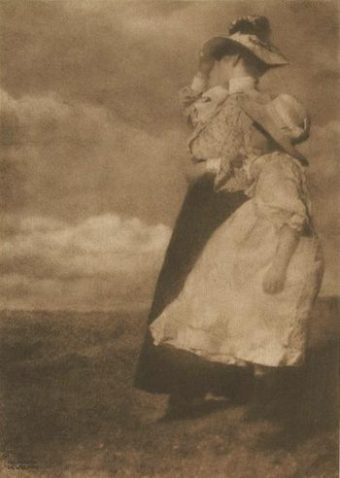
Heinrich Kühn, photography. 1911.
Franco Moretti noted in Signs Taken as Wonders, that the mechanism that creates particularly moving moments (in literature or stories) is a result of a structure in which the point of view of the central character (though it doesn’t HAVE to be central) coincides with the point of view of the reader — a point of view created itself by the narrative. The character who didn’t know enough, or was confused or mistaken, finds him or herself now lucid and free of illusions — in sync with the understanding of the reader. He calls this *agnition*. And that what is most moving is when agnition comes too late. In other words when the reader, or audience, realize the situation has moved past the point where anything can be done to alter the inevitable outcome for this character. So melodrama must contain a quality of fatalism in a sense.
But also that the audience must know something the character does not. And this touches on Neale’s quote above. For pathos is the usual emotion of melodrama today, not genuine sadness. And it is pathos because the ‘cultural ethos’ of the time is increasingly blurred. Blurred if not just gone missing. And maybe this is one of those markers by which critics parse modernism from postmodernism. In fact I suspect the master narratives of the state today replicate post structuralist’s drifting margins and history — these fuzzy historical outlines and contexts are then used for even current event stories. In other words Obama or Trump tend to exist outside of history. Even with Shrub, history still existed, even if it was being fabricated or revised. And the more that history is erased the more lip service is paid to it. Trump is often attacked for his lack of historical precedent. How he tramples tradition. But in a sense, Trump is actually a step back — for it was Obama who was most the floating signifier President. The man who wasn’t there.

Barbara Probst, photography.
“In his effort to fill the space of transition from the cold war to the New World Order, President George Herbert Walker Bush staged a war in the Persian Gulf that was designed to supply U.S. citizens with tele-visual representations of a military victory that the conclusion to the cold war lacked. As images of the war were broadcast across the tele- vision, these media representations eliminated the distance separating the viewer’s perspective from the state’s military action. The state’s aestheticization of this display of force enabled the sovereign people to participate in the war as an extension of the technology through which it was visualized. The televisual record of the war did not represent the action. It produced a fantasmatic structure that embedded U.S. citizens in the project of war. As the television screen replicated an incoming missile’s aerial view, the conflation of the television screen and the smart bomb’s lens secured the fantasy that this was not representation but an enactment of the sovereign power to remake the world in the image of U.S. democracy. And once the war’s enactments were articulated to the nation’s patriotic fiction, that fiction represented the state’s show of force as an expression of the sovereign will of the U.S. people to propagate the U.S. model of democracy worldwide.”
Donald E. Peace (The New American Exceptionalism)
Now Pease observed that after the Oklahoma City bombing the Newt Gingrich led new right chastised Bill Clinton for abrogating the Cold War social contract (to paraphrase Pease). The public wanted that narrative back, it was familiar and it was also self serving and flattering. Pease has a good chapter that links WACO and the OKC bombing as a kind of new covenant.
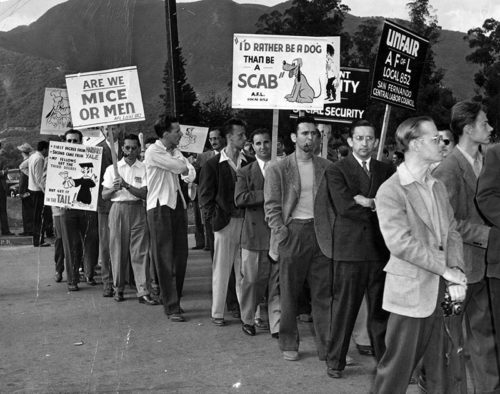
Disney animator’s strike, 1941.
“The Puritan magistrates cited passages from the book of Genesis and John’s apocalypse to legitimate their theocracy as well as the regions of exceptions they produced to extend their dominion. Throughout its history, the U.S. imperial state appealed to what could be described as the cultural reserve of apocalyptic anxieties to justify its sovereign powers to declare war, pass judgment, and execute criminals. It was the convergence of the Puritans’ apocalyptic beliefs concerning the end of time with the founders’ utopian representations of American Revolution as “a transformation of history in history that would consummate and so give meaning to history” that endowed the nation’s founding the status of a sacrosanct event.”
Donald Pease (ibid)
The shootout at WACO, and an earlier FBI shootout with Randy Weaver, that killed both his wife and son, were seen as installments in a new long running Hollywood anti-western. In April 1995 the OKC bombing occurred and the apocalyptic implications for narration were both huge and fraught with ambivalence. Remember too that the US state was never not attacking somebody. The gulf war, Grenada, Panama, Nicaragua, Lebanon. Reagan never, literally, stopped the sending of troops somewhere. But even a cursory glance at US military actions will give on a pretty fair idea of the extent and frequency. action…https://en.wikipedia.org/wiki/Timeline_of_United_States_military_operations
Culturally the ‘Contract for America’ was always going to play out in simple melodramas of white victimhood. But OKC represented a narrative impossible for for Americans to digest in conventional terms. The American white liberal shares with the white reactionary an inability to digest or process their own guilt.
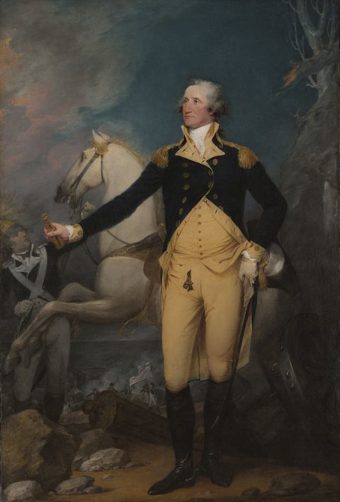
John Trumbull 1792 (Washington at Trenton)
Now, there is a digression to be made here regards the aesthetics of violence, and the aesthetic quality of fatalism, and of guilt. There is a fascist aesthetic, to be sure, and there is a violence I associate with sentimentality and certain forms of comedy. And there is the form, melodrama since we’re talking about it, that accommodates itself seamlessly with both fascism and violence.
The contemporary loss of curiosity in youth, even in University students, the deterioration of reading and comprehension skills, was all set in motion — in its current phase, after WW2. And its difficult to tweeze apart all the branches and how it all progressed. Ive read several pieces recently about how the CIA and State Department championed French post structuralism as a means to discourage Marxism and socialist thinking, to control and manage radical impulses. And its true, of course. I’ve even discussed it here. But its also an excuse for many to indulge their anti-intellectualism. But I think its worth looking back a bit further, briefly, to Germany in the 1930s, and to the rise of Heidegger and National Socialism. For Heidegger was to prove a very large PR boon to Hitler and the Reich. Yvonne Sherratt has very good chapter on Heidegger and his relation to National Socialism in her book Hitler’s Philosophers. The links in thinking between Schmitt and Heidegger are rather telling if one looks down the road toward the U.S. today. Fascist thinking is always more fun, in a sense. And it lends itself more easily to magazine article cleverness. Heidegger, though, was not Jordan Peterson or Zizek. Heidegger was a legitimate thinker and while in retrospect much of Heidegger has not aged well (in addition to the, you know, pro eterminationist fascism lurking in his thought) he also cannot be dismissed off-handly as a thinker. Though as Karl Lowith noted, Heidegger’s *being* was always just metaphysical Nazism.
Soon after becoming a member of the Nazi Party, and a Rector …
“From the Rector’s office with its tall panelled windows framed with carved wood Heidegger set about penning a series of damning letters about various colleagues to the Nazi police.
Among these, he instigated an investigation into one of the world’s most distinguished chemists, Professor Friedberg Hermann Staudinger, who later won a Nobel Prize. His crime was that he had ‘pacifist’ tendencies. Heidegger also invented the spurious allegation that the chemist might be a spy.He informed the Gestapo and recommended that: ‘because Staudinger is lukewarm about national recovery. Rather than offering him retirement, we must think of dismissal. Heil Hitler. Heidegger.’ Solely due to Heidegger the terrified man was surveyed, interrogated and hounded. Heidegger even requested a meeting with a senior Nazi official, and eventually Staudinger was forced to leave.”
Yvonne Sharrett (Hitler’s Philosophers)
Adding snitch to his resume makes sense, too, actually. For all the kitsch imagery of Heidegger’s thinking, there is an active core authoritarianism evident. There is in his personal life, too, a subtle sense of the opportunist. And I will come back to this because Heidegger is still …in fact more than ever….taught at Universities today.
Maybe by way of counterpoint to The Godfather it might be worth looking at the first season of HBOs Euphoria. Created and largely written by Sam Levinson, son of Barry, and based on an Israeli show, it is the nearly perfect example of contemporary contempt in all its various guises. When I first saw it, the first two episodes, I knew nothing about who made it, or if it was an adaptation of a book, or another show. I remember telling someone, ‘you know, it’s not that it’s not compelling in many respects, but somehow the mean spiritedness of the project can’t be escaped’. Then I heard it was an Israeli show originally, and it began to make more sense.
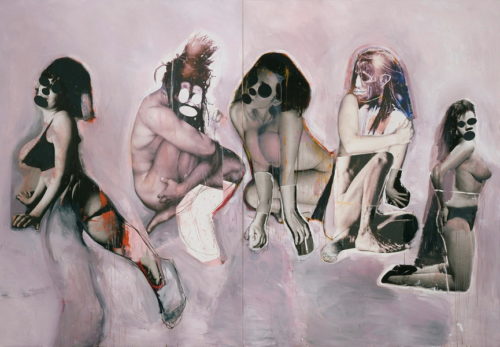
Richard Prince
Without even trying to do some sort of review, what strikes one most clearly about Euphoria, if the entire season is examined, is that in terms of storytelling this is close to what has come to be called ‘an afterschool special’. That term was coined by ABC back in the early 70s to describe one off dramas targeting youth and having clear moral prescriptions and values. Topics were seen as officially ‘controversial’, within an acceptable range, and this was followed by CBS with its Afternoon Playhouse (later CBS Schoolbreak Special .. which ran until 1996). These were melodramas for teens, mostly. Early teens, those home after school let out at 3 pm.
The Urban Dictionary entry on Afterschool Special is as follows…“A television program airing in the hours immediately after most kids arrive home from school. These programs mostly attempt to teach youngsters about the dangers of premature sex and illegal drug use. Scare tactics and religion-based idealogical brainwashing are commonly used in these programs. While none of these programs discuss the dangers of legal narcotics such as Paxil, Xanax, Zoloft, Ritalin, Viagra, and other Dr prescribed drug regimens (because of the fear of losing advertising revenue); safe, salutory, and remedial herbs such as marijuana are demonized due to fervent corporate funding by the oil industry, agricultural companies and the biggest corporation of all..the bible-thumping lunatics of the Christian/Catholic church. Once kids realize that they’ve been lied to about the dangers of marijuana, they then assume that they’ve been lied to about other, more dangerous, harder drugs (cigarettes, alcohol, heroin, crystal meth, crack). These programs also tend to make kids and adults feel guilty about sexual feelings and perpetuate erectile disfunction and other sexual problems which ultimately manifest into lower self-esteem and other psychological disorders.”
Euphoria is not terribly far from this except that it’s trying to be the anti-afterschool special. And it’s not, although probably, to be fair, it falls somewhere in between.
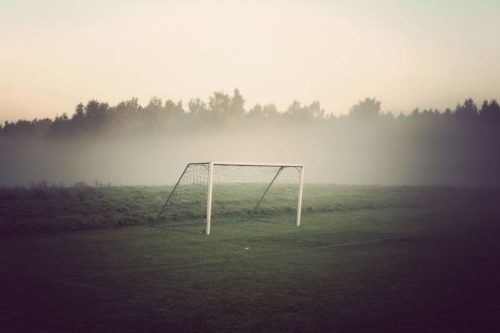
Kim Høltermand, photography.
There are several very good performances (first timer Angus Cloud in particular). The writing is sharp, facile, and there is a clear drive for hippness. A friend asked me, after watching two or three episodes, ‘who do you think HBO imagines the audience for this to be?’ And the answer is, not teenagers. There is also the clear fingerprints of HBO on the whole project. And for all the erect penises and graphic sex and nudity (per HBO by-laws apparently) the show amounts to a schoolbreak melodrama crossed out with an 90s music video. Sam Levinson is only there by virtue of nepotism, and the whole thing is an Israeli project — and that takes us back to mean spirited. Actress Hunter Schafer, who began life as a boy, becomes the cultural marker for au courant. And Shafer is, rather sadly, not an actress. An LGBT activist and model, one of the serious problems for the show is neither Shafer nor Zendaya (one name ya all) are able to carry the show forward. Buts it’s not their fault, really. There is no story on which anything hangs. There is not much TO move forward. And the show is not doing all the things it makes a big display of pretending to do .. be subversive, sex positive, tolerant (regarding sex, drugs, ethnicity). And one cannot shake, or I couldn’t, the creepy anti humanity at the heart of it all. It is derisive and unforgiving, it is also stunningly bourgeois in its basic DNA.
What I take away from this is that the colonial white supremacism of American narratives (and Israeli more to the point) are now shorn of even the mitigating virtues that made John Ford westerns or Sam Fuller, or Peckinpah, or Raoul Walsh — arch reactionaries all — such complex experiences. It is worth noting that my favorite Fuller is probably the 1959 Crimson Kimono, with James Shigeta and Glenn Corbett as former war buddies (both back from Korea..see Quarry below) who work as cops in downtown LA Little Japan/Chinatown. Besides a glorious opening tracking track, the film is the usual sun lit noir hysteria that Fuller did by nature. Yet the film remains deeply unsettling and in some ways the least reactionary of Fuller’s work due to embedded ambivalences of race and class. And its a film about violence. I could add a whole series of under-seen 50s noir, which look better today than you can even imagine (Ida Lupino’s directed The Hitch Hiker, 1953, a surreal exercise in crime psychosis, or His Kind of Woman, 1951, directed by John Farrow…but really Howard Hughes and worth watching if for nothing more than Mitchum and Jane Russell whose eroticism is palpable, or the more often screened Detour, the Edgar G. Ulmer classic or Gun Crazy, Joseph H. Lewis, or Lang’s The Big Heat.) My thought experiment is spend a weekend and watch the Lupino, the Fuller, and anyone of the others, and then watch Euphoria. And then get back to me.
Adding a few options…The Prowler (1951), directed by Joseph Losey before he left Hollywood for good, and written by Dalton Trumbo while black listed, this is a low budget intellectuals spin on Double Indemnity. Or Preminger’s Angel Face (1953) again with Mitchum, or The Phenix City Story, 1955, directed by Phil Karlsen. I mean there are many, and Kiss Me Deadly can’t really ever be left off. And if one wants to write about noir, probably the last place to look is in film studies (Kelly Oliver’s Noir Anxiety is a case in point. An entire book on the subject without once mentioning WW2, fascism, the emigre Jewish German directors who created most of the most memorable films in this category .. at least in the 40s.)

Crimson Kimono (dr. Sam Fuller, 1959)
One thing I think that cannot but be obvious from such an experiment is just how degraded is western culture today. It is not , however, obvious exactly in what ways. Some of this is purely structural.
Jonathan Frome (19-9 Filmtildsskrift, 2004) writes off the Neale essay…
“Thus, on Neale’s view, the viewer of a melodrama knows something that the character doesn’t. When the character learns the key information (and their point of view thus reconciles with the viewer’s), the agnition takes place and sadness is generated. Neale modifies Moretti’s conditions, arguing that films can still be moving even if agnition occurs in time to generate a happy outcome, as long as there is a delay that creates the possibility of failure. And “the longer there is delay, the more we are likely to cry, because the powerlessness of our position will be intensified, whatever the outcome of events, ‘happy’ or ‘sad’, too late or just in time”.”
In Little Big Lies and in Euphoria, there is never even such simple structural elements at work. Happy or sad are not the conclusions to a story, the resolution, but rather like dispensations this or that character inherently deserves. They are magical results. Either caused by magic or uncaused magical occurrences. Loyalty to authority, unquestioning, is always good. In a sense this is an era of nearly medieval religiosity and a growing new perverse attraction to one’s own oppressions. But the HBO material is also, not just feudal in temperment, but reminiscent of a variety of 19th century forms for fiction (The Misterios, the folletins of mid 19th century Spain, very early chick flick precursors). In Little Big Lies, the magic is the purview of the single black character, visiting her bi racial daughter. The subaltern is the apotheosis of sorcery and the supernatural. The ruling class fear of its own mass regression, coupled to its desire for same. Dipesh Chakrabarty wrote of a British debate of the 1930s that place in newspapers on the topic of Indian street magic. That such practices were symbolic of the underdevelopment of Indian culture. And one argument suggested by a British reader was that Indians might be tricked into an evolution where that same magic, a part of daily Indian life, would become a performative *stage magic*.
But this is a screen damaged time, this is the second or third generation raised with parents of the screen. And I am reminded then of Theodor Reik’s take in The Compulsion to Confess, which is a study of Crime and Punishment.

Yi Wan
“Reik argues that human beings have a basic need to express ourselves to others. The child’s expressions develop as compromises between the urge to express and the internalized responses of caregivers to expressions, which are consolidated into the superego. When others repeatedly reject the child’s expressions, the child comes to reject its own expressions through repression. Repressed expressions return as composites of the need to express and the internalized prohibitions against expression. These composites emerge as unconscious confessions in which the patient both communicates repressed material and punishes herself for doing so. Reik proposes that neurotic symptoms comprise such unconscious confessions.”
Kyle Arnold (Psychoanalytic Psychology, 2006)
But one of the things that make watching those noir films of the fifties, let alone the forties, so poignant is that expressions are accepted, or rejected — the audience knows and recognizes the character defects born of coerced solitude and loneliness. I suspect today children find an incoherence and not rejection (though perhaps that ends in the same place). Absence, as so much of contemporary life feels interrupted and incomplete. The child does not reject his or her own expressions so much as never develop them very far. The deformed narratives of the state, which are more and more absurd, are scanned and not read anyway. People react to cues. They assume the story will move forward based on the movies and TV that they have seen.

Youssef Nabil, photography.
Moretti (ibid) quotes Victor Shklovsky on another aspect of crime, guilt, confession, and this growing loss of all narrative structure.
“I speak of clues as a formal device because their narrative function (the encrypted reference to the criminal) remains constant, although their concrete embodiment changes from story to story (they can be words, cigarette butts, footprints, smells, noises, and so on). Shklovsky makes the point with characteristic intelligence: ‘One critic has explained the perennial failure on the part of the state investigator and the eternal victory of Conan Doyle’s private detective by the confrontation existing between private capital and the public state. 1 do not know whether Conan Doyle had any basis for pitting the English state against the English bourgeoisie. Yet 1 believe that if these stories were written by a writer living in a proletarian state, then, though himself a proletarian writer, he would still make use of an unsuccessful detective. Most likely, it is the state detective that would be victorious in such a case, while the private detective would no doubt be floundering in vain. In su ch a hypothetical story sherlock Holmes would no doubt be working for the state while Lestrade would be engaged in private practice, but the structure of the story would not change’ “

Vincent Desiderio
If one examines property relations in the films of, especially, the 1940s, and then what Hollywood makes today (as crime or neo noir) there is an almost total reversal. The villains are the renters and unemployed, homeless even, and the forties the villains were the wealthy owners of the mansions and estates. (I’ve mentioned before Pacific Heights, the 1990 noir directed by John Schlesinger..where in the forties the Keaton character would be home owner not the psycho come to rent a basement room. And presumably Schlesinger should know better since he came up with the British New Wave and some very class conscious early work.) It is always interesting to look back and make comparisons. Schlesinger directed Far From the Madding Crowd, with Julie Christie and Alan Bates, and a terrific Terrence Stamp. And the great Peter Finch. That was 1967. In 1971 Joseph Losey directed The Go Between, with Alan Bates and Julie Christie, and adapted for the screen by Harold Pinter. Frederic Raphael adapted the Schlesinger. The Losey film is based on a minor novel by L.P. Hartley, and the Schlesinger was adapted from the great Thomas Hardy novel. I have no real point here except that the Losey is the far better film, and I think that is entirely to do with Pinter. One wonders if such ensembles were possible today. I am sure at least one of these is due for a remake. But more to the point, both were examinations of class. Both were essentially and primarily studies of class, of the scars and damage and suffering that hierarchies of class produce. Sexual desire was tied to class, guilt was tied to class, and violence came out of class tensions. I cannot think of a single film today of which I might say the same.
A quick side bar. There are things that get made that are estimable. The Cinemax series Quarry — which unsurprisingly lasted a single season, was perhaps the best TV in a decade, or more. Set in Memphis 1972, as several soldiers return from Vietnam. It is interesting that the show could find no other home after Cinemax cancelled them. I mean fascist kitsch like Designated Survivor found a new home. Anyway, might be hard to find, but Quarry is worth watching. And Logan Marshall-Green was really something special. Announcing the cancellation the show’s co- creator suggested an auteur aspect in that cancellation; the meta narrative for the psychic cancellation of Mac ‘Quarry’ Conway. The unforgiving nature of U.S. society, and the hatred of those who came back and weren’t winners. The sort of show Robert Stone might have written in his spare time. The curious Indian made Netflix series Delhi Crime is unexpectedly haunting. And so on. First season of The Terror was very fine, and indeed about class and British colonial delusions, and season two (an entirely new story) promises to be just as good. So such things do happen. They are almost invariably unsuccessful.

Ulrich Wuest, photography.
One point here is that today not only are property relations usually reversed (in terms of good and evil) but property itself has become a featured character. The first season of Little Big Lies was entirely about real estate. What one critic called aspirational homes. Much post apocalyptic films feature real estate prominently. It is clearly a very common fantasy to imagine just walking into six figure properties and taking possession. And one thing that remains absolutely consistent throughout studio product is the innocence of the ruling class.
Life itself is privately scanned by individuals. It is screen tested, as it were. And here something struck me about guilt. Well, about guilt and early childhood development. Klein’s notion of a *transitional object* is a very profound one (think Linus’ comforter in the Peanuts cartoon strip). There is a huge amount to say about this, and both Klein and Winnicott wrote extensively on the subject. But one aspect of this theory posits (and this is mostly Winnicott’s interpretation of Klein) that if the internal object loses meaning, then the transitional object will only then lose it, too.
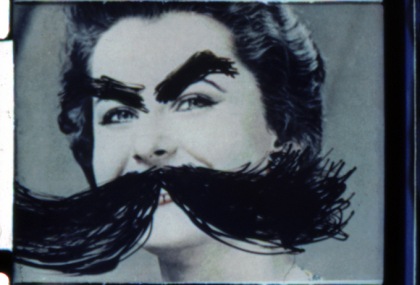
Vlado Kristi
“If external lack of success persists, the internal object fails to take on a meaning for the child, and then, and only then, does the transitional object too lose meaning. Probably this precise description of the importance of the external object marks the beginning of Winnicott’s detachment from Melanie Klein. The transitional object can mean the `external’ breast, but also the `internal’ breast. The transitional object is never under magical control like an internal object nor is it out of control like the real mother.'”
Roberto Speziale-Bagliacca (ibid)
Perhaps having three small sons now, including identical twin brothers, allowed me to see the depth of these notes. And to understand the enormity of what happens to the child who loses a sense of trust or belief in the internal object. Once the transitional object loses its magic, as it were, there is a huge reservoir of anger and pain unleashed. It is an indelible scar, really, for the dead transitional object is then life’s companion. Without the space to mature and process the pull of that *magic* the child will, so I think, become enamored of real magic —
and my guess is that this later investment in real magic (sic) touches up that Althusserian idea that when the contemporary voice wants to sound meaningful, he or she adapts the subject position — in a structural sense — or identifies with, or both, of a ‘meaningful statement making voice’. This quality of ventriloquism permeates western culture.
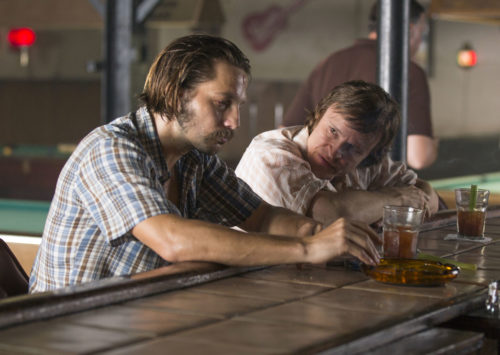
Quarry (2016) created by Graham Gordy and Michael D. Fuller. Dr. Greg Yaitanes.
But there is an increasing normalization of magical abilities or people. And I want to try to finish here by making a perhaps strained and at the least esoteric connection between Klein and Winnicott, transitional objects and guilt, and the relationship with Myth and regression and notions of Nature. In Guilt and Defense: On the Legacies of National Socialism in Postwar Germany, which was a sort of precursor in a sense to The Authoritarian Personality, Adorno noted regarding the formation of mass public opinion…“as if one was gaining insight into primitive phases of identification, almost into the prehistory of humanity.”
The changes found in contemporary society relating to parenting and emotional atrophy generally suggest that children are now finding the continuity of care, or concern, more often interrupted. And an expectation of interruption then follows.
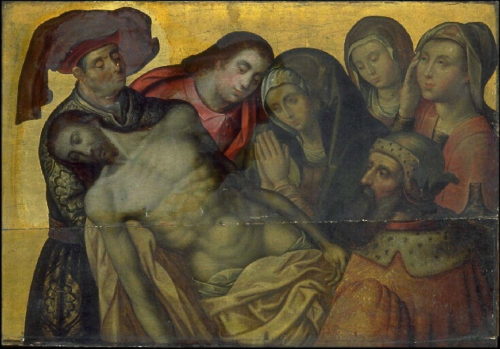
Anonymous Flemish painter, second half of 16th century.
“It is assumed here that the task of reality-acceptance is never completed, that no human being is free from the strain of relating inner and outer reality, and that relief from this strain is provided by an intermediate area of experience which is not challenged (arts, religion, etc.). This intermediate area is in direct continuity with the play area of the small child who is ‘lost’ in play. In infancy this intermediate area is necessary for the initiation of a relationship between the child and the world, and is made possible by good enough mothering at the early critical phase. Essential to all this is continuity (in time) of the external emotional environment and of particular elements in the physical environment such as the transitional object or objects. “
D.W. Winicott (Transitional Objects and Transitional Phenomena—A Study of the First Not-Me Possession, International Journal of Psycho-Analysis, 1953)
It is not totally uninteresting that Klein and Winnicott were exploring these theories at the same time the sun-lit noirs discussed above were being made. The master narrative was transitioning to a new form of melodrama.
Adorno and Horkheimer saw the problem of the infection of instrumental reason at the core of the Enlightenment’s aims. Instrumental reason is, then, tied in with control and domination at its inception. The acquisition of knowledge, of *reason* is also tied into security. That capitalism grew from these goals seems relevant. And in The Dialectic of Enlightenment, it is the story of The Odyssey that describes the rejection of pleasure. (the rowers, ears plugged, know only the dangers of the Siren’s song, but nothing of its beauty). And this rejection of the song eventually erodes the value of the song. And this mechanism has progressed tremendously over the last half century. In bourgeois judgement, the call to abandonment is not only denied but punished.

Anne Laure Sacriste
“The relationship that the subject has with the external world at the end of the stage of totalization and the onset of the stage of fragmentation is solely through the ego-drives. This is a relationship where fear has led to the attempt to ‘exterminate’ all that is external to the self. If successful this leads, of course, to the loss of all that is external including the external world as the object for the ego. The only remaining object therefore becomes the ego itself.”
Yvonne Sharratt (Dialectic of Enlightenment, History of the Human Sciences,Vol 12 No. 3)
This serves as a thumb nail explanation of the indifference in the Western public toward war, pollution, and environmental decline.
But for the child, in the age of the screen, the passivity toward the world at large is also riddled with complexes of guilt and rage. The spate of mass shootings is the mirror of the violence of class domination and the wanton cruelty of the ruling wealthy of the planet. The disenchantment of the world is progressing — as multiple sclerosis progresses, or ADL. And the new magical thinking that can be seen daily in mainstream news or Hollywood films and TV is tied into the rise of explicit fascism. And that in turn brings me back to Heidegger. After the war Heidegger was gradually rehabilitated, in large part through the efforts of Hannah Arendt. In fact many Nazi philosophers found employment again at the Universities in Europe. Jews such as Adorno and Horkheimer had a harder time, though Horkheimer did return to direct the Frankfurt School and then Rector of Frankfurt University. He was forced to step down in protest over the growing anti semitism of the faculty a short while later. Heidegger became a star in France due to an endorsement from Sartre.
Many other prominent Nazis returned to academic prominence. Gottlob Frege is one. The father of analytic philosophy. The point here is that those seeds of authoritarianism came with the hyper rationality and repressions of the Enlightenment. And more, while the CIA supported the post structuralists and their anti politics, they were also happy to welcome Heidegger. Academia is the distillation of hyper rationality and my deep instinctive distrust of positivism speaks to this. Institutional thinking in sociology, in the revisionist psychoanalytic world of professional therapies — throughout this can be found the echoes of Heidegger’s magical Nazism. The fascism defeated militarily lives on in the approved western canon of ideas. The new interrupted child of the screen age will find the most easy path one that leads away from radical thought, from Marxism or socialism.
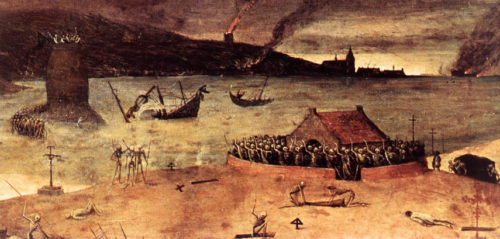
Pieter Bruegel the Elder (Triumph of Death, detail. 1562).
To donate to this blog you can use the paypal button at the top of the page. Thanks to those who have, it’s much appreciated.

John. One of your Best! Never thought about how Neo Noir (loving Noir as I do.)was Anti Working Class,as opposed to Pure Noir,which to Quote Hammett was embodied by the Ethos “This World is Ruled by The Cops,The Crooks ,and The BIG RICH. And the Worst of these are THE BIG RICH.” Excellent.
Great stuff… more to say but for now: The whole Canon is being reissued as gaiman comix, turning liberalism inside out. Derrida in his book devoted to Heidegger text (notions elaborated in the lectures that became _Spectres_) took up the Rectorship address only to conclude the only thing wrong with it was it committed the sin of Cartesianism. How’s that for a punchline
Funny in typical US uni survey class of Existentialism the sequence of the core canon is always given like this : Kierkegaard Dostoevsky Nietzsche Heidegger Sartre Camus, as simply a kind of geneology. By the late 80s Derrida could be added as postscript. In parallel you used to have classes in Marxism inside philosophy departments that would treat these thinkers as ruling class ideologues battling Marx Lenin Mao. then some time in the nineties all the contemporary Heideggerians were suddenly relabelled and treated as if they were socialists and the successors of Marx Lenin Mao.
(also love The Go Between. losey’ Monsieur Klein is playing at film forum next week. )
You can see the progression of the spectacle fascization from the liberal prog Schlesinger Hardy, thru the rather good BBC miniseries of the 90s, to this kind of shocking thing that I saw on a plane Friday (alongside The Favourite . Also fascist )
Right, there was also the walter kaufman effect. His “Existentialism; From Dostoyevsky to Satre” had a huge effect. It was a standard university text. Published in 1953….and the chapter headings were as follows…Dostoyevksy, Kierkegaard, Nietzsche, Rilke (go figure), Kakfa, Ortega (y gasset), Jaspers, Heidegger, Sartre and Camus. But then later, as you noted, the shift brought in Derrida, often, or even Foucault. Gramsci was totally invisible. And Lenin or Marx were seen as not philosophy but economics or something. The term “philosophy” was for work in which there were no politics.
Right kaufmann was standard commentary (and his somewhat bogus Nietzsche editions were all that was avail) but by 80s only still in high schools I think. Not so much in uni courses which generally took the position of “now we have to undo the damage kaufmann did to you un high school.” But in the 80s the thing was to dump him not because he was bowdlerizing but because he was committed to liberal consensus, and the reaganite mood was rightist-transgressive. Actually tho both Benjamin and Gramsci were in vogue at this time , much defanged and de-communized presented as proto postmoderns focused on “culture.” Susan Buck-Morss was kind of the rising hipster appropriator of Benjamin getting famous and Gramsci was being taught as a radlib through British trots mostly (Eagletons bestseller primer on lit theory came out in mid 80s). Althusser was also very much in vogue too. But by the late 80s these camps seen as antagonists (Nietzscheans vs Marxists) had been made into a generic stew of “radicalism”
my memory of it was Kaufman was sort of the popularizer of Nietzsche, primarily and then Existentialism via that one book. This is the late sixties onto the seventies. I was nowhere near universities in the 80s so I don’t know. I knew there was a small uptick in Benjamin, though I don’t remember gramsci much at all. But there was also a difference in UK and US focus. I dont think the US had a version of UK trots. The US did have, maybe starting in the nineties, where guys like Cavell and Rorty were very big. They were the lit crit American bred version of Derrida et al. I do remember being shocked when I read Rorty….and thinking the fuck is going on here? Stuff like Althusser was dismissed….and that weird thing happened where lit crit syphoned off a lot of philosophy, and people like stanley fish surfaced, which was even more shocking, actually. I dont know what places like Berkeley were reading in the 90s- but certainly it wasnt mao or lenin or gramsci (I dont think)….and it also, that era, marked the real start ….or escalation of conflating socialism and fascism etc.
Great piece John. The Godfather stuff indirectly reminded me of this (not unproblematic) fragment from Debord’s Comments on the Society of the Spectacle (pp.63-67):
“In January 1988 the Colombian drug Mafia issued a
communique aimed at correcting public opinion about
its supposed existence. Now the first requirement
of any Mafia, wherever it may be, is naturally to
prove that it does not exist, or that it has been the
victim of unscientific calumnies; and that is the first
thing it has in common with capitalism. But in these
particular circumstances, this Mafia was so irritated at
being the only one placed under the spotlight that it
went so far as to give details of the other groupings
who were trying to cover themselves by illegitimately
using it as a scapegoat. It declared: ‘We ourselves don’t
belong to the Mafia of politicians and bureaucrats,
bankers, financiers or millionaires, nor to the Mafia of
fraudulent contracts, monopolies or oil, nor to the
media Mafia.’
We can doubtless assume that the authors of this
statement have, like all the rest, an interest in
diverting their own activities into that vast river of
troubled water whose course irrigates the whole of
present society, a river of crime and more banal illegalities.
But it is also correct to assume that here we
have people who by their very profession know better
than most what they are talking about. The Mafia
flourishes in the soil of contemporary society. Its
expansion is as rapid as that of all the other products
of the labour by which integrated spectacular society
shapes its world. The Mafia grows along with the swift
development of information technology and industrial
food processing. along with urban redevelopment
and shanty-towns, secret services and illiteracy.
WHEN it was first brought to the United States by
migrant Sicilian workers, the Mafia was nothing but
an uprooted archaism; just like the gang wars
between Chinese secret societies which appeared at
the same time on the West Coast. Born out of obscurantism
and poverty, the Mafia at that time was not
even able to put down roots in Northern Italy. It
seemed condemned to vanish with the progress of the
modern state. For it was a form of organised crime
which could only prosper through the ‘protection’ of
backward minorities, outside the urban world, where
the laws of the bourgeoisie and a rational police force
. could not penetrate. In its defence, the Mafia could only
eliminate witnesses, to neutralise the police and judiciary,
and to maintain necessary secrecy in its sphere
of activity. But subsequently it found fresh scope in
the new obscurantism first of diffuse spectacular society.
then of its integrated form: with the total victory of
secrecy, the general resignation of the populace, the
complete loss of logic, the universal progress of
venality and cowardice, all the conditions were in
place for it to become a modern, and offensive, power.
Prohibition in America (one of the finest examples
this century of the state’s pretension to be able to
exercise authoritarian control over everything, and of
the results which ensue) handed over the trade in
alcohol to organised crime for more than a decade.
From there the Mafia, with its new wealth and experience,
moved into electoral politics, commerce, the
development of the market in professional killers, and
certain aspects of international politics. During the
Second world War it received favours from the US
government, to help with the invasion of Sicily. Legalised
alcohol was replaced by drugs, now the leading
commodity in illegal consumption. Next the Mafia
became closely involved in property dealing, in
banking and in high-level politics and affairs of state,
and then in the spectacular industries: television, films
and publishing. And already, in the United States at
least, it is involved in the music industry, as in every
other activity where promotion depends on a relatively
concentrated group of people. It is easy to apply
pressure to them, with bribes and intimidation, since
there is no shortage of capital or of untouchable,
anonymous hitmen. By corrupting the disc-jockeys
one can choose what will succeed, from equally
wretched commodities.
But it is undoubtedly in Italy that the Mafia has
acquired the greatest strength, in the wake of its
experience and conquests in America. Since the period
of its historic compromise with the parallel government
it has been able to kill magistrates and police
chiefs with impunity – a practice it inaugurated
through its participation in the displays of political
‘terrorism’. The similar evolution of the Mafia’s Japanese
equivalent, in relatively independent conditions,
well illustrates the unity of the epoch.
It is always a mistake to try to explain something
by opposing Mafia and state: they are never rivals.
Theory easily verifies what all the rumours in practical
life have all too easily shown. The Mafia is not an
outsider in this world; it is perfectly at home. Indeed,
in the integrated spectacle it stands as the model of all
advanced commercial enterprises.”
thanks, Garl. Thats just great.
” that weird thing happened where lit crit syphoned off a lot of philosophy,” Yeah, and dropped all standards of scholarship in the process. I actually took the very first “Literary theory” course at Cornell ever it was a graduate course and offered in comp lit, taught by two actual Marxists (Satya Mohanty and Walter Cohen). By then 80s Eagleton tho British had become already very influential in US academy even before the best seller textbook Literary Theory. His earlier _Criticism and Ideology_ relied on Gramsci Althusser and Macherey and you’ll remember that the latter two were also popularized by SCREEN magazine so the new film studies helped push this material. Fredric Jameson had just published The Political Unconscious which was a big hit and also helped popularize Macherey who seems almost forgotten now. Verso books was the avenue for Brit trot saturation of US left discussion then and especially at Cornell where Perry Anderson’s brother Ben Anderson (Imagined Communities) taught. But Manning Marable was hot young academic then also disseminating Gramsci in US and his stuff (From the Grassroots first, then How Capitalism Underdeveloped Black America) was hot in history and in relatively new Africana Studies depts. But I really learned the real Gramsci from a fellow student an italian commie who was shocked by the vitiation of Gramsci on campus and showed me how distorted all these treatments of Gramsci were. I remember a very popular Verso book called The Gramscian Challenge from the early 80s seemed pretty good. But mostly Gramsci was seen as this culture studies trailblazer. I wrote my thesis on the history of the reception of Machiavelli in political science and theatre and the Modern Prince was the last part of it and my advisor was unbelievably perverse about Gramsci, determined to deLeninize and turn Gramsci into a kind of Situationist. I didn’t realize much later the same sanitizing and deMarxizing misinterpretation was at work in how they used and abused Benjamin and Brecht and even Debord
(taught then as a precursor of Baudrillard and kind of semi serious troll pop theorist like MacLuhan) who does actually have some of these flaws but also many radical and true insights.
and re Mafia: recently saw Francesco Rosi’s Lucky Luciano with Volonté and recommend.
great Art
Terrific essay. Chiming in merely to endorse Quarry, which I’d not heard of until your mention of it and then sought out immediately. It is superb as far as so-called quality TV goes. Even three episodes in, there’s no wonder it wasn’t renewed—nothing about it allows the viewer vicarious access to power or wealth or both, and there’s no easy point of identification.
@jon … right, when I saw it the first time, I knew, ok, one season and i hope we can get through the entire season. Glad to you appreciated it.